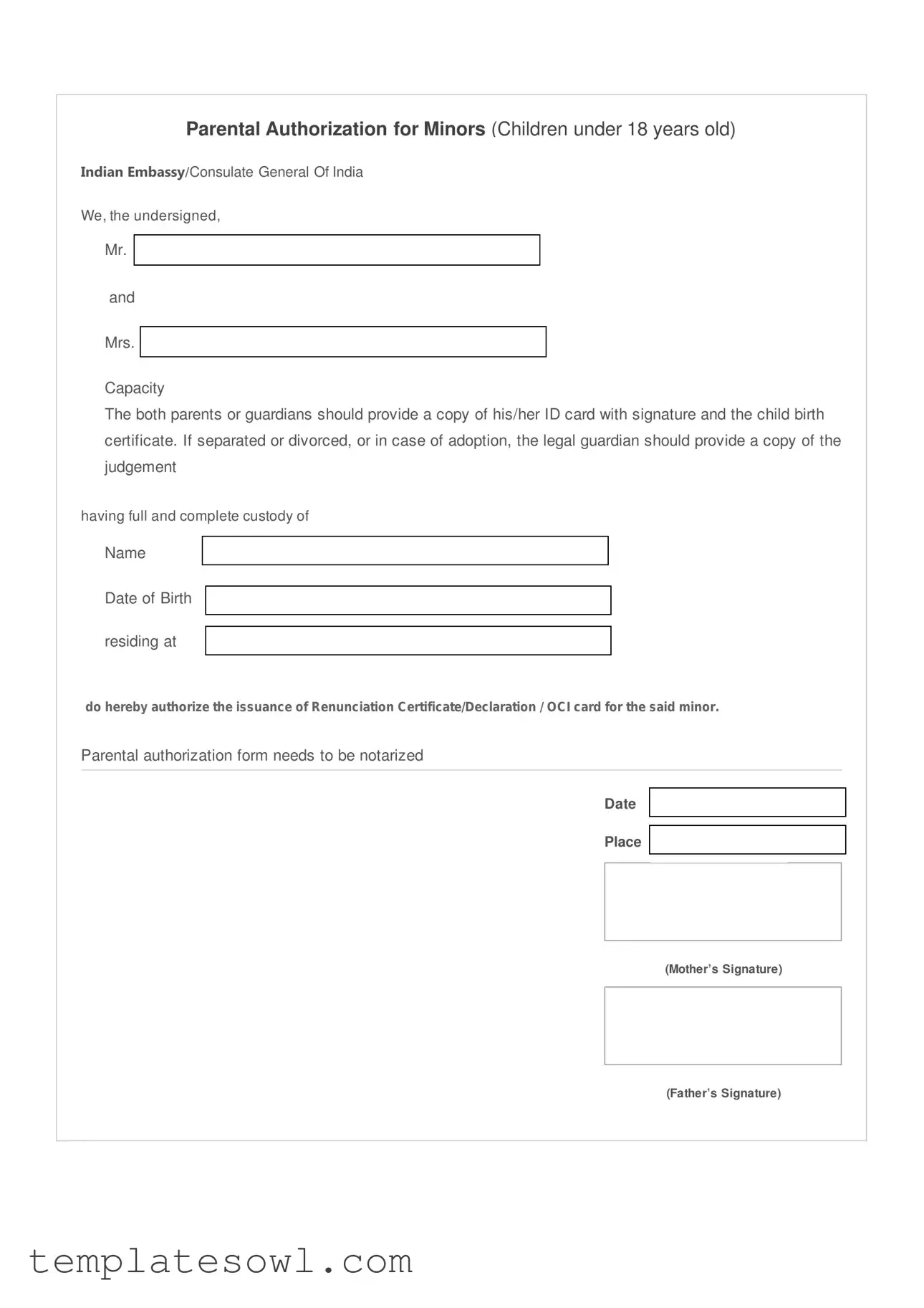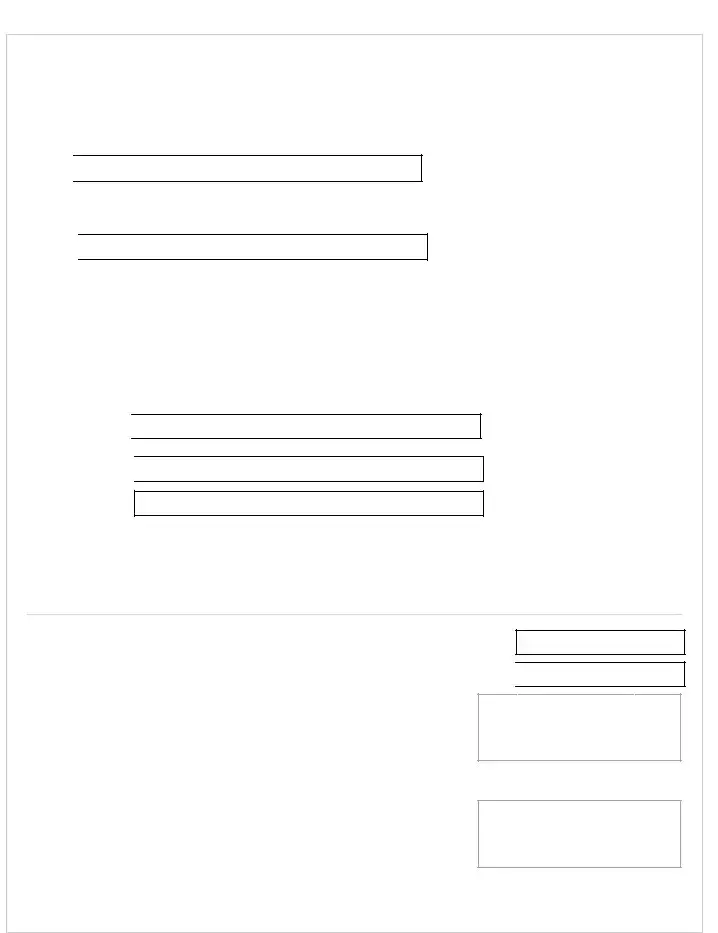What is the purpose of the Parental Authorization for Minors form?
This form is specifically designed for the renunciation applications concerning minors under 18 years old. It allows both parents or legal guardians to formally authorize the issuance of a Renunciation Certificate or Declaration for the minor child.
Who needs to sign the Parental Authorization for Minors form?
The form should be signed by both parents or legal guardians of the minor. If one parent is unavailable due to separation, divorce, or adoption circumstances, the legal guardian must provide documentation showing they have full custody of the child.
What documents are required when submitting this form?
To accompany the form, both parents or guardians must provide a copy of their ID card, which includes their signature. Additionally, a copy of the minor's birth certificate is required for verification purposes.
What should I do if I am a single parent or if one parent cannot be located?
If you are a single parent or cannot locate the other parent, you will need to provide a copy of the legal judgment that grants you full and complete custody of the minor. This documentation is important to ensure the authorization is valid.
Do both parents need to be present when signing the form?
No, both parents do not need to be physically present at the same time to sign the form. However, both signatures must be collected, and the form must be notarized for it to be accepted.
Why is notarization required for this form?
Notarization adds a layer of authenticity to the signatures on the form. It helps verify that the signatures are genuine and that the individuals who signed have done so willingly and intentionally.
Where should the completed form be submitted?
The completed Parental Authorization for Minors form should be submitted to the Indian Embassy or Consulate General of India, depending on your location. Make sure to check their specific submission guidelines for any additional requirements.
Can I fill out this form online?
This form is typically required to be printed, filled out by hand, and then signed by the necessary parties. Additionally, it must be notarized before submission, so ensure to follow these procedures as outlined.
What happens after I submit the Parental Authorization form?
Once you submit the form along with the required documents, the Embassy or Consulate will process the renunciation application. The processing time may vary, so it is advisable to check with the relevant office for updates on your application status.
Is there a fee associated with the Parental Authorization for Minors form?
There may be fees associated with the processing of the renunciation application. It is important to inquire about any potential fees when submitting your application to ensure you are prepared.














 Date of Birth
Date of Birth 


